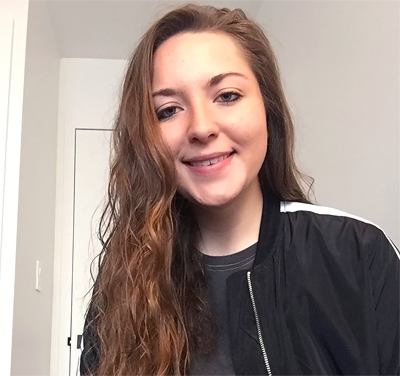Ah, advertisements. What would we do without them? It's a phenomenon that good advertisements stick in our heads and may even convince us to try something we didn't think about purchasing before. For radio advertisements, one way to get a product stuck in a listener's head is by creating a catchy jingle for it.
Jingles can now be heard on more than just the radio: you can find them on TV and internet advertisements, too. But radio was the first medium to really modernize - and popularize - the jingle. The history of radio jingles is actually quite fascinating, and for this week's Live365 History of Radio post, we're exploring where radio jingles came from, the first radio jingle, and how jingles transformed from being an advertisement tool into a musical radio station identifier.
The Origin of Jingles
Turns out, using songs as a form of advertisement is a lot older than you may think. There is anecdotal evidence to show the use of custom musical "songs" for advertising goes back to at least the time of William Shakespeare, and possibly even further than that (we're talking Greek and Roman times).
In 16th century Elizabethan England, traveling bands of musicians would entertain street corners, hoping to persuade their audience to drop a few coins in their favor. Of course, it would never be enough to live on, so most musical groups had to promote a "sponsor" – the local butcher, baker, banker, etc. – someone who could afford to support them.
Sometimes these promotions were good-hearted philanthropic efforts, but usually the musicians would be asked to write a song about their sponsor in order to get paid, and then that song would be sung as part of every performance the musician gave. You gotta do what you gotta do to eat!
If you've read our 10 Crazy Fun Facts About Radio list, you would know the cereal brand Wheaties - owned by General Mills - was the first brand to be advertised on the radio via a jingle. It was performed on Christmas Eve 1926. Wheaties wasn't selling well at the time. In fact, one account says General Mills had seriously planned to end production of Wheaties by 1929 due to poor sales.
Fortunately, a quartet of male singers swooped in to save the day over live radio. "Have you tried Wheaties? They’re whole wheat with all of the bran. Won’t you try Wheaties? For wheat is the best food of man,” they crooned.
The jingle was initially aired only in the Minneapolis/St. Paul market, and sales for the cereal spiked soon after radio listeners heard the ad. Wheaties' advertising manager, Samuel Chester Gale, revealed that 40,000 of the 53,000 cases of Wheaties sold in 1926 were bought in the Twin Cities area, where the Wheaties quartet commercial was regularly broadcast.
After Gale pointed out Minnesota was the only area where the "Have You Tried Wheaties?" jingle was being broadcast, General Mills accepted the song as a success and began broadcasting it nationally. It quite literally saved the company, and now you can still find boxes of Wheaties on your local grocery store shelves!
The four Wheaties singers also experienced success from the jingle. They became known as the Wheaties Quartet, and were made up of an undertaker, a bailiff, a printer, and a businessman. They would go on to sing the Wheaties song live on-air for years for $6 per person each week. (That's equal in purchasing power to about $100 today.)
Jingles Become Mainstream
Soon after the success of the Wheaties jingle, other advertisers quickly saw the value in having a custom musical melody as a way to sell their product. By 1923, there were over 500 licensed radio stations across the United States, so you can imagine how companies saw jingles as a lucrative advertising tool.
Additionally, jingles were a loophole around a strict ban on direct advertising the National Broadcasting Company enforced during the 1920s. A jingle could magically get a brand's name planted in the heads of potential customers even though it did not fit into the definition of "advertisement" accepted in the late 1920s. Truly, the power of music is a remarkable thing - even if you're trying to sell something.
Jingles flourished in the 30s and 40s and even reached a boom around the 1950s, when radio was competing with television for attention. Jingles were used to sell everything: breakfast cereals, candy, snacks, soda, tobacco, automobiles, personal hygiene products, household cleaners, and even beer. Below is a famous jingle and advertisement for Dr. Pepper that was broadcast during the mid-1950s:
Not only could jingles be played as pre-recorded tracks, but live performers featured on a radio station were also allowed to sing jingles on-air as a way to promote a sponsor.
Although jingles are still used for advertisement today, there's been a downturn in their use. In August 2016, The Atlantic reported that in the United States, the once-popular jingle was now being replaced by advertisers with pop music and other hit songs to make their commercials more memorable. In 1998, there were 153 jingles in a sample of 1,279 national commercials. By 2011, the number of jingles had dropped to eight jingles out of 306 commercials.
The Radio Station Jingle
When did the process of music-based advertising evolve from the whimsical jingles of the 1950s into thoughtful and modern audio versions of radio station logos? If you're into radio, you've definitely heard the four letters of a radio station being sung by voices in between advertisements and Top 40 broadcasting.
Unlike jingles made for ads, jingles made to announce a radio station are not on the fritz. When jingles made for ads became popular, a few stations began airing jingles to promote themselves. This became increasingly important as more and more stations took to the air, and the jumble of call letters a listener was exposed to rose. A lot of times, people didn't even know which station they were listening to, so memorable jingles aided listeners' recall. They also added more production value to a station's sound and could be used as a transitional tool.
As early as 1947, singing station identifications were used by the station KLIF in Dallas, Texas. Dallas native Bill Meeks was a musician working at KLIF who had a knack for jingles. In addition to leading two bands that performed live on the station, Bill also created jingles for the shows’ sponsors and made musical identifications for the station itself. They all got favorable reactions, and KLIF had high ratings.
In 1951, Meeks formed his own advertising agency named PAMS (Production Advertising Merchandising Service). Working in the agency strengthened Bill’s belief that most radio listeners at the time didn’t really know which station they were listening to. Drawing from his experience at KLIF, Bill decided many radio stations could benefit from having musical station identifiers.
PAMS designed a group of ten jingles, and called the package simply "Series 1." A more elaborate "Series 2" followed shortly thereafter. The idea was that stations would hear a demonstration tape of Meeks' jingles (a "demo"), and re-write the lyrics to suit their needs and creative tastes. PAMS would then assemble a vocal group in a studio and re-sing the jingles using the station's new lyrics, over the already-existing instrumental backgrounds Meeks created.
As word of success stories spread, PAMS began recording jingles for broadcasters all over the country. Although PAMS produced hundreds of musical jingles for brands, station identification jingles became the firm’s specialty. Meeks turned a 1906 decision to issue unique station call signs into a multi-million dollar industry devoted to accompanying those call signs to music.
Although this recap is more visual than audial, we hope we got the history of radio jingles stuck in your head! Perhaps it's even inspired you to record a jingle or two for your own online radio station. We can't wait to hear them, and in the meantime, happy broadcasting!
Sources:
- History of Jingles - Imagine Words & Music
- Radio Recall, ASK THE EXPERT... - Metropolitan Washington Old Time Radio Club
- A Brief History of PAMS and the Radio Station Jingle - Pams.com
- Wheaties: The First Broadcast Jingle In History - The Daily Meal
- What Killed the Jingle? - The Atlantic
Ready to start your own station? Contact one of our Product Consultants or visit our website today.
Discover thousands of free stations from every genre of music and talk at Live365.com. Keep up with the latest news by following us on Facebook (Live365 (Official) and Live365 Broadcasting) and Twitter (@Live365 and @Broadcast365)!
Article Image: The "Wheaties Quartet" of the late 20s poses with Wheaties cereal boxes, a microphone, and grand piano. (Jake, The Air Warden via YouTube.)


